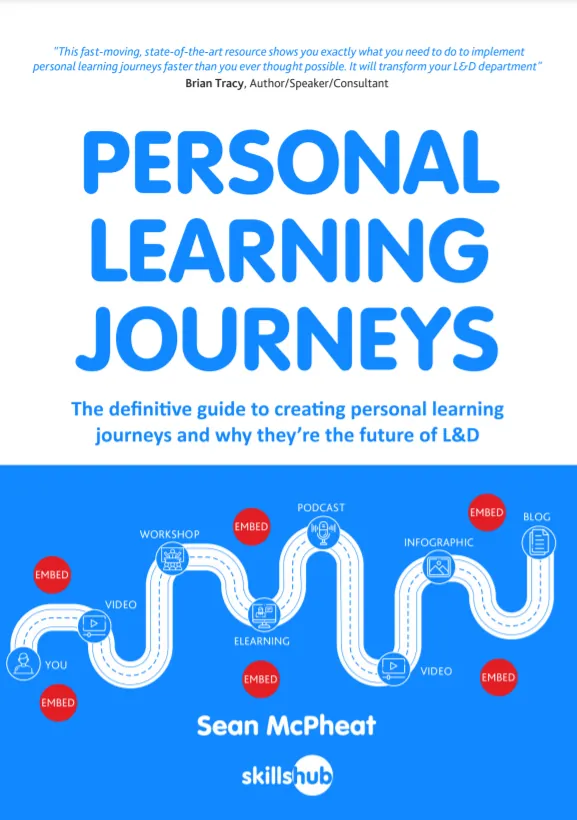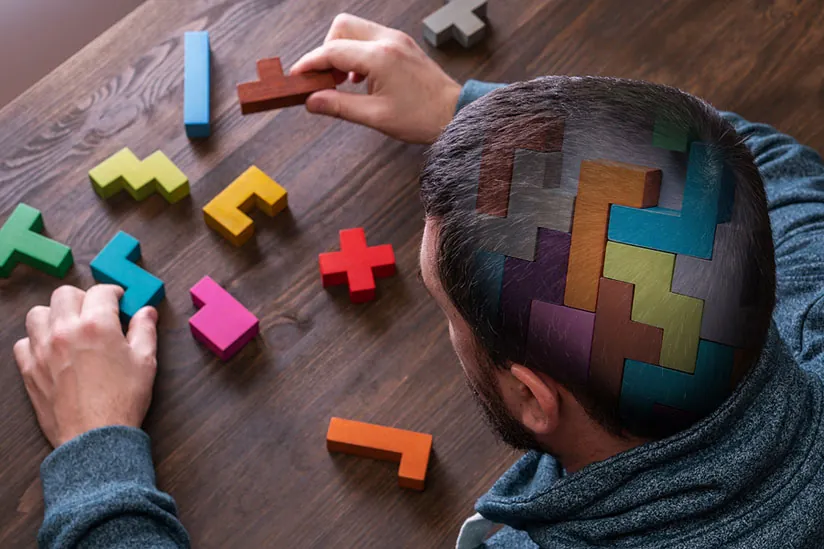Many don’t know the meaning of the word and even more don’t even know how to pronounce it correctly!
What am I talking about?
Pedagogy.
There are many aspects of learning and development that stand close scrutiny and have been developed over the years. An amalgamation of teaching and student learning has driven many new forms of understanding in the whole learning process. Both education and business learning have benefited from a clearer understanding of how the brain initiates learning and how students compute information.
One area that has gained interest recently has been how we can consolidate the almost-limitless amount of information we have at our fingertips with the teaching and learning components that enable that learning to be assimilated at the core level.
Thus, the aspect of ‘pedagogy’ is now often discussed, as we formulate new ideas on how learning and development in education and business can be combined with new concepts in Artificial Intelligence and Virtual Reality.
This article covers the meaning behind the term ‘pedagogy’, where the term came from, why it’s important to understand its implications and how we can break down the 5 approaches to apply it in the real world. We also give some examples of how pedagogy can be used in business learning today.

Pedagogy meaning
It has various definitions, including:
“the way teachers deliver the content of the curriculum to a class.”
“the method of teaching, both as an academic subject or theoretical concept.”
“Working together allowing conversation, which teaches language, meaning, and values in the context of immediate issues.”
The Tutoring Standards Company have an interesting definition of the term ‘pedagogy’. They determine it as the phrase ‘A tutor must elicit response that demonstrates understanding’
So, ultimately, the term pedagogy can be used to define the various ways that teaching and learning is carried out, in an educational and business sense.
I like to think of it as joint-learning opportunities, both for the facilitator and the learner, and the earlier quote of ‘eliciting response that demonstrates understanding’ is key to the learning process.
As we progress, let’s see why knowing more about the learning processes are important for us in education, training and business.
How to pronounce pedagogy
Many people, when they first come across the word, are puzzled about how to say it properly.
Pronounced ‘Ped-uh-goh-jee’ (according to dictionary.com, the emphasis is on the first syllable, not the third), the term was originally from Greek paidagōgía, meaning “office of a child’s tutor.”
What are the origins of pedagogy?
My research shows the word comes from late Middle English, via Latin, and from the Greek paidagōgos, denoting a slave who accompanied a child to school (from pais, paid– ‘boy’ + agōgos ‘guide’)
Wikipedia notes that the term “refers to the theory and practice of learning, and how this process influences, and is influenced by, the social, political and psychological development of learners… Pedagogy is often described as the act of teaching.”
We also get the term ‘pedagogue’ from the same root word, deriving from the 14th century Middle English term for ‘a boy’s tutor’.
So, the word has been synonymous with learning and development for hundreds of years. It meant the connection between the teacher or facilitator and the student was driven by the social and psychological needs of the learner.
In other words, how training and lessons should be carried out depends on the way the learner learns, and the understanding that person has to gain, before we start preparing the lesson or the course.
What does it mean for us today and how can we develop our facilitation skills around that knowledge?
Why is pedagogy important?
We have seen many changes in the way school lessons and training programmes have been conducted in the past few years, with on-line and AI processes driving these minor and major advances. The pedagogical methods used to help students and delegates learn new concepts and ideas have also changed to keep up with the ever-evolving processes that newer generations are experiencing.
Millennials, Generation Z and now Generation Alpha need new ways to be immersed in learning experiences, as they have been brought up with different technological learning methods than previous generations. If we don’t deliver learnings in the way these new generations compute information, we are in danger of stifling creative flow, and not engaging their learning brains in the best way.
As we learned from the above quote, good pedagogy is about eliciting responses that demonstrate understanding. So, here are some reasons why pedagogy is important to display:
a) It makes the relationship between the teacher and learner that much closer, as they work together to determine the best learning experience.
b) It helps the learning facilitator become agile in their approach, to match the learning processes of their students.
c) There derives a direct link between the way the learning is encouraged and the actual results of the learning.
d) Engagement in learning is increased when students or delegates have an input to the way the learning is encountered and expressed
e) Increased access to more metacognitive learning strategies tends to corelate to longer-term embedding of ideas and concepts
f) Delivering learning programmes in ways that learners learn best makes students more likely to be engaged and have greater propensities to retain more in the future
g) The more students learn, the greater the enjoyment of the processes, and the more open to self-learning they become in the future
h) When learners take in information that is applicable in real-world situations, they are more likely to see connections between the concept of learning and better results being obtained in work and school settings.
We see from these quick examples that good, modern-day pedagogy involves the interconnection of learning ideas, ways and methods of training or coaching them, and the achievement of results obtained following action after the learning.
What are the 5 pedagogical approaches?
Eliciting responses that demonstrate understanding is at the heart of pedagogy in today’s business setting and classrooms. We owe it to our students and delegates to create a learning environment that is encouraging and engaging, immersing the senses in on-going learning journeys.
Gone are the days where the lecturer would disseminate knowledge to students, who would act as sponges to their dissertations. These days, students want vibrancy, energy, animation, dynamism and collaboration, not a simple download of the tutor’s experience.
Here are five approaches we can take to build the learning environment:
Constructivist:
This involves getting the learners to be involved in developing the meaning behind the sessions. We advocate ‘reversed classroom’ techniques, where delegates will learn concepts for themselves before any training and demonstrate them during the sessions. Having them involved in physically and mentally constructing the sessions help you as facilitator to get to the application much quicker and without wasting time setting up activities.
This helps the brain to assimilate information more clearly, as they see how the construction of materials can be applied in the workshop with others. It also enables them to share experiences they have prepared beforehand.
Collaborative:
As you would expect, this enables learners to work in pairs, groups or whole teams to learn concepts and apply them in real-world scenarios. You could get students to teach others about their experience in small groups.
In some of our trainings, we allow small groups to get together and individuals share their sales or management experiences with others, so they learn from real situations. The facilitator joins certain groups to listen in and answer any queries. Many delegates say they learn a great deal from these collaborative sessions.
Inquiry-based:
This pedagogical approach builds around situations and problems the learnings will experience in their line of work. It could be case-study based, where a pre-prepared situation is disseminated to small groups who use their experience to work on it, or specific issues and challenges that the learners have brought with them or prepared beforehand.
The value of using these scenarios is that learners can imagine themselves in these situations and can use real-time discussions to work on the answers.
You could also set questions or scenarios and ask them to go on-line to research the answers, reporting back to the rest of the group later.
Integrative:
This is where learners learn while interacting with others. An integrative approach allows for a cross-fertilisation of ideas and concepts that maybe new to various others. The whole point is to make discussed-concepts applicable to other environments, stretching students’ minds to apply the new ideas in challenging situations they might encounter outside the classroom.
Integrating ideas is important, as the brain has to recognise the practical application of ideas they have learned. If delegates return to their environment saying they have ‘had a good couple of days’ but cannot apply the lessons learned because they are too ethereal or generic, they have wasted their time.
Running an integrative session is vital if people are to see results from their learning sessions.
Reflective:
Allowing learners to reflect on what they have picked up is vital if the ideas are to be consolidated, established and embedded in their minds and hearts.
Get learners to spend five or ten minutes reviewing their notes, discussing actions with one or two partners, sharing learning points with others, and planning the actions they are going to take. That way, they consider and reflect on the value of the learning experience, proving to themselves that the time they devoted was valuable.
Reflective time is also good for you as facilitator. It gives you time to contemplate learning points and decide which areas worked well and which worked less well, along with bringing materials up-to-date with new ideas.
These five approaches can be amalgamated and constructed in formats that work for the specific audience you are working with. Integrating new learning methods (maybe VR and technological advances) can introduce fun elements into the learning process and get people to engage more thoroughly with the learning concepts.

Learn How To Create Personal Learning Journeys For FREE!

Pedagogy Examples
The company Teaching Tolerance coined the phrase ‘Joint Productive Activity’ and it sums up the concept of modern-day pedagogy very well. The company outlines some ways that the idea assists us as teachers, facilitators, trainers and coaches to build a firm base for establishing learning protocols.
Here are just a few of their examples:
- We work together with students or delegates to design activities and exercises for learning
- We allocate appropriate time to develop learning designs so the ‘joint productive activity is accomplished
- We arrange the learning environment to allow students to communicate effectively with each other
- We involve ourselves in the key learning concepts the students are going through
- We mix students up in activities and exercises so they can get ideas from different cultures, backgrounds, abilities and viewpoints
- We mix the activities, so students enjoy individual work, pairs, small groups and whole group learning passages
- We create materials and instructional ideas that allow for joint productivity between the group and the facilitator
- We build confidence in our students and delegates by positive interactions and the development of interactive exercises
What does this mean for us as facilitators of learning?
1) We must provide the opportunities for learners to look forward to the learning experience.
This involves setting the scene for them, getting them engaged before the sessions, carrying out research for themselves and preparing ideas for discussions in the learning environment. This can be classroom based or learning that is delivered via an online learning platform.
If they prepare their issues, challenges, and questions beforehand (and possibly send these in before the programme starts), they get involved and engaged in their minds, ready to attend any learning experience with a positive attitude
2) We must put the learner at the centre of the learning experience
Often, we hear trainers and facilitators say ‘This is what I want them to learn…’
We think this is the wrong mindset. All learning should be aimed at what the learner needs to learn to be more productive, effective, or efficient. It doesn’t revolve around the tutor… it should centre on the learner. Even on an online learning platform, the learner needs to be in control and at the centre of their own learning experience.
3) Learning needs to be ‘demonstrable’ in real-world settings
Discussing Maslow’s ‘theory’ or Kurt Lewin’s ‘concepts’ may be good for model discussion, but the real pedagogical approach today involves seeing how the ideas can be applied. Build on the ideas and then demonstrate, model or case-study the situations, so learners can see the way the whole concept can work in situations they may encounter, maybe the very next day.
4) Make learning a collaborative process between facilitator and learner
We’ve used the term ‘facilitator’ often in this article, and deliberately so. Our concept of facilitator can be applied in a teaching environment, when we are working as coaches, in a mentor setting, or as a trainer in a workshop.
By facilitation, we are referring to the person facilitating the learning environment, making it easy for learners to assimilate information and apply it in the real world.
So, the concept of developing a collaborative process is easier if we consider ourselves as facilitating the learner to learn. And this is easier if the learner helps us design and develop the programme.
Final Thoughts
This model shows how the pedagogical process can be applied in any learning environment – whether it be face to face, virtual training or elearning content.
We prepare the content by establishing what the learners need to learn, then present and deliver it according to the learning styles of the individuals we are working with.
Then we build the cognitive processes that allow us to train or teach at the pace and in the style our learners take in information, becoming learner-centric.
We then evaluate how successful we have been by assessing the value the learners have received.
When we think how far we have come from the ancient Greeks’ line of instruction and education, through the medieval churches’ methods of inculcating grammar, rhetoric and logic, and now the active use of artificial intelligence to drive the thinking mechanisms of our learners, we recognise that learning must be at the forefront of progress in civilisation, enabling us to evolve our species in a way that will create long-term advances and short-term benefits to humankind.
Yes, modern-day pedagogy has a very vital part to play in our advancements in learning and development.
If you’re ready to level up your L&D strategy with the help of an eLearning company, check us out here at Skillshub if you are looking for eLearning content.














